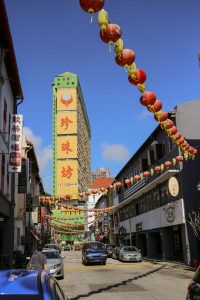China, Asean and the new Maritime Silk Road
November 25, 2021

‘China, Asean and the new Maritime Silk Road’ (The Straits Times, 2021) features edited excerpts of University Professor Wang Gungwu’s (NUS Department of History) keynote speech from a recent webinar organized by the Academy of Professors Malaysia.
After World War 2, the only people who thought about South-east Asia as a region were those from outside South-east Asia itself. In particular, the British, in liaison with the Americans, the French, and others, realised that South-east Asia could be a way in which they could protect their interests in a region outside China and India. Therefore, South-east Asia needed to be separately considered and protected from being dominated by either India, China, or both.
With its own continent and no other land enemies, North America is greatly dependent on its maritime supremacy. On the other hand, China has to focus on being both a continental power as it has 14 different neighbouring states on land, and maintaining an adequate naval defence to protect its interests.
The rivalry between the US and China means that both sides would like Asean to lean to one side or the other. However, Asean’s best choice would be to lean to neither, though Prof Wang adds that this may not be a feasible strategy in the long term. According to Prof Wang, if China can make sure that Asean remains autonomous and not take sides, that would be considered a measure of success, since Asean started out established by the US.
The Maritime Silk route was primarily initiated by commercial interests, with some geostrategic elements. Prof Wang explains that the Chinese realised that they cannot depend solely on the sea and need more ways to reach out to markets and resources. Thus, they gained access to the Indian Ocean and greater naval power through land routes in South-east Asia under the Belt and Road Initiative.
Read the article here.
